Front and Center
Biographies Showcase the Theater of Life
These eight biographies range from a legendary soccer coach surviving the Holocaust to a Peruvian activist fighting for reform to Texas’s favorite satirist and songwriter sharing his stories. Though they have little in common, each is the tale of a life worth examining.
A Hero for the Americas
The Legend of Gonzalo Guerrero
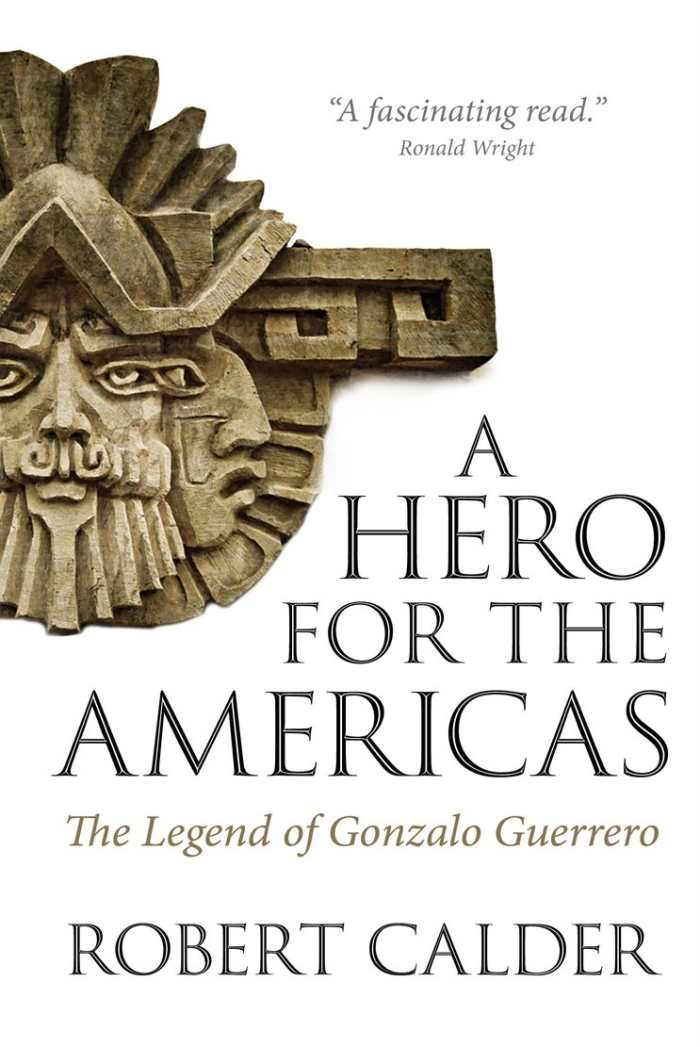
Robert Calder
University of Regina Press
Softcover $19.95 (208pp)
978-0-88977-509-1
Buy: Local Bookstore (Bookshop), Amazon
The story of Gonzalo Guerrero has long been part history and part legend, with the sixteenth-century sailor treated as a hero or villain depending on who’s telling the tale. In A Hero for the Americas, Robert Calder tries to put Guerrero in his proper historical context, contrasting him with his contemporaries and examining his presumed role as the father of the first mestizos and a key symbol of Mexico’s past.
In 1512, Guerrero was among a group of Spaniards who shipwrecked on Mexico’s Yucatan peninsula, only to be taken prisoner by the local Mayans, who sacrificed some of the Spaniards and enslaved others. Only Guerrero and shipmate Jeronimo de Aguilar were ever heard from by their countrymen again, and Calder does an expert job positioning these two men as opposite sides of the same coin.
When conquistador Hernan Cortes began his conquest at Cozumel, he met Aguilar, who told the story of the sailors’ capture, and—having lived as a captive among the Mayans—became a key translator for Cortes during the takeover of the Aztec empire. But when Aguilar sought out Guerrero and tried to convince him to join the Spanish cause, the latter chose to remain among the Mayans.
Now a free man, he had married a Mayan woman, fathered children, and changed his physical appearance to fit in with his new family. And he has long been rumored to play a key role in helping the Mayans hold off Spanish invaders, helping to save them from the fate of the Aztecs.
Using primary sources from the time and the analysis of later writers, Calder offers several reasonable explanations for Guerrero’s choices, avoiding the easy hero/villain narrative. He also does an excellent job describing the era of Spanish exploration of the new world, both the excitement that would have enticed Guerrero to sail to Mexico and the harsh consequences of that exploration for the Mayans and others. A Hero for the Americas is a strong portrait of both the man and his era, and a worthy biography.
JEFF FLEISCHER (October 27, 2017)
The Quantum Astrologer’s Handbook
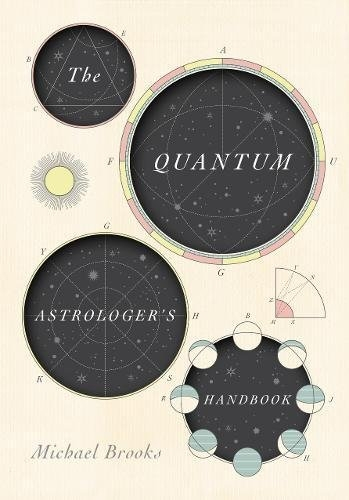
Michael Brooks
Scribe Publications
Hardcover $14.99 (256pp)
978-1-911344-40-7
Buy: Amazon
Jerome Cardano may not have specifically discovered quantum theory, but his work on probability and binomials helped make it possible. In The Quantum Astrologer’s Handbook, Michael Brooks explores the Renaissance mathematician’s life and legacy, from his early quest for fame to how his penchant for astrology earned the ire of the Inquisition. This is a fun read that blends biography and science with a bit of magical realism, a fictionalized book with lots of factual research behind it.
Brooks deploys a clever framing device in which he, as the author, visits Cardano’s prison cell while the scientist awaits a hearing with the Inquisition over his astrological charts, and tells him about the future. This allows him to imagine how Cardano would respond to the time-and-space travel that serves as a logical extreme of his probability work, while using dialogue to explain these ideas in layman’s terms. Brooks also peppers the book with the parallel story of how quantum science came to be, tracking how later scientists, from Isaac Newton to Albert Einstein to Niels Bohr, built upon the concepts that Cardano pioneered.
While the science often takes center stage, Cardano’s life is compelling in its own right. Professional rivalries, his high-profile treatment of an ill monarch, a son who was executed for murder and another who actively undermined his father’s legacy—Brooks’s approach lets the book discuss all these conflicts in depth.
As with everything else in the book, the imagined conversations between author and subject let Brooks both tell Cardano’s story with the benefit of current research and attempt to view things from the perspective of a Renaissance man. That interplay between the past and present makes The Quantum Astrologer’s Handbook an unusual biography, but a memorable one.
JEFF FLEISCHER (October 27, 2017)
Sorrow of the Earth
Buffalo Bill, Sitting Bull and the Tragedy of Show Business
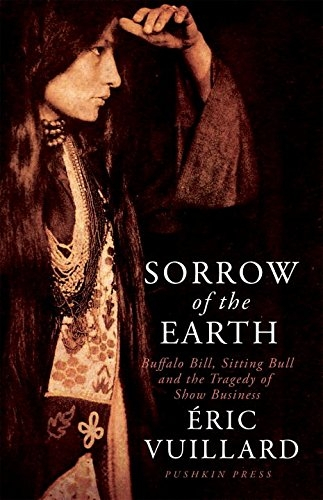
Eric Vuillard
Ann Jefferson, translator
Pushkin Press
Hardcover $19.95 (192pp)
978-1-78227-221-2
Buy: Amazon
At the turn of the twentieth century, few Americans were more famous than Buffalo Bill Cody, and his Wild West shows played to huge crowds. But while those shows were popular, they also presented a sanitized and highly mythologized version of the West. In Sorrow of the Earth, Eric Vuillard uses musing prose to try to get inside the heads of Cody and of the Native Americans who performed in his shows, reenacting false versions of their experiences and creating an alternative history in the process.
This slim book is written with a mix of the show’s actual history and esoteric ruminations on how the participants must have felt about it. For Cody, Vuillard focuses on how the tall-tale exploits of his life became part of the show, and how late in life he claimed to have taken part in events he’d only recreated.
Vuillard also considers Sitting Bull, the great Lakota victor of the battle of Little Bighorn, who joined the Wild West Show to earn money by being paraded in front of booing crowds, signing autographs, and posing for pictures. He describes the plight of the survivors of the Wounded Knee Massacre, reliving the terrible events as part of the show, even as the context and inciting incidents were rewritten for an audience that supported removing Native Americans from their land.
The text is supplemented by photographs of the Wild West participants, from the famous shot of Cody and Sitting Bull together, to one of Lakota survivors sitting in a makeshift replica of their village. These help Vuillard show the peak and decline of a show that soon became an anachronism.
Cody formed his own town in Wyoming that fell into disrepair; Sitting Bull was murdered in a botched arrest; and other spectacles captured the public imagination. Vuillard describes all of this in a sad, poetic style that conveys how the show shaped ideas about the West long after the frontier was gone.
JEFF FLEISCHER (October 27, 2017)
Most Scandalous Woman
Magda Portal and the Dream of Revolution in Peru
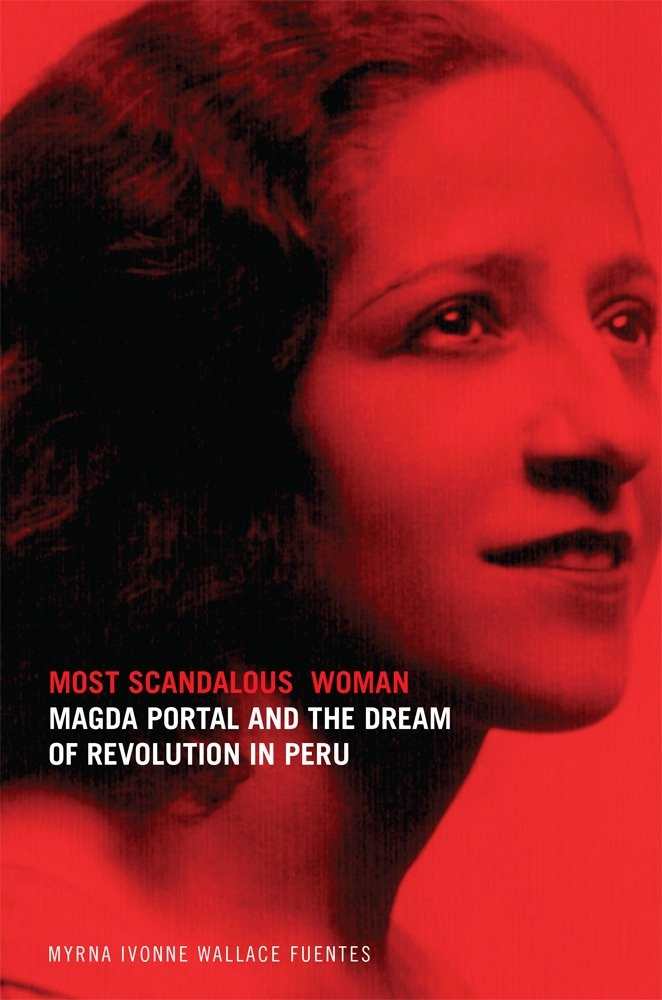
Myrna Ivonne Wallace Fuentes
University of Oklahoma Press
Hardcover $34.95 (376pp)
978-0-8061-5747-4
Buy: Local Bookstore (Bookshop), Amazon
A poet, journalist, and key leader in Peru’s American Popular Revolutionary Alliance, Magda Portal was nicknamed by her opponents as a “Most Scandalous Woman.” Myrna Ivonne Wallace Fuentes looks at both Portal’s life and her work in a well-researched and comprehensive biography of the same name.
In her twenties, Portal came to prominence on both poetry and revolutionary fronts simultaneously, winning a prestigious award for her writing and then publicly refusing it at the ceremony as a way of taking a stand against the Peruvian government. Living in exile in Mexico, she joined the APRA and helped spread revolutionary ideas throughout Latin America.
Most Scandalous Woman does a strong job of examining Portal’s role as the most prominent woman’s voice in the movement, as a target of the Peruvian government’s crackdown on the ARPA who spent time in prison, and as the editor of the party’s news operation. Through her efforts, ARPA became one of the most important political movements on the noncommunist left, until Portal and others broke with the party in the 1950s.
Fuentes makes regular use of Portal’s own poetry to convey her thoughts on current affairs, underscoring both Portal’s gift with language and her bravery in expressing revolutionary ideas. Portal’s journalistic work also features prominently, and Fuentes consistently underscores the added degree of difficulty Portal overcame as a prominent woman in a male-dominated movement, whether with the challenge of protecting her daughter while on the run, or with the social mores that made her an iconoclast for using her voice.
Fuentes also examines Portal’s sex life, her relationship with her mother, and the sexism she experienced even within her own party. The result is a thorough portrait of a strong woman who was a giant in her era and whose legacy remains important.
JEFF FLEISCHER (October 27, 2017)
Everything’s Bigger in Texas
The Life and Times of Kinky Friedman

Mary Lou Sullivan
Backbeat Books
Hardcover $29.99 (304pp)
978-1-4950-5896-7
Buy: Local Bookstore (Bookshop), Amazon
Kinky Friedman is something of a Texas legend. The satirist has, at various times, made his name as a singer-songwriter, a mystery author, an essayist, a columnist, an animal-rescue crusader, and a political candidate. Mary Lou Sullivan’s biography of the Kinkster, Everything’s Bigger in Texas, thoroughly captures the Jewish cowboy’s many careers and tells a story packed with interviews and anecdotes.
Friedman is a master raconteur, always ready with a funny quip, and Sullivan’s book reflects that. But she also gets him to open up to a surprising degree, making this his definitive biography. The story covers Friedman’s early years at the camp his parents ran in Texas, working for the Peace Corps in Borneo during monsoon season, taking part in civil rights protests, and attending the University of Texas during the sniper attack by Charles Whitman (which inspired one of his most well known songs). Along with Friedman’s own recollections, Sullivan includes those of his friends, family, and bandmates, really fleshing out these memories.
Of course, the more well known adventures of Friedman’s life also make for fascinating reading: his early tours with his band the Texas Jewboys packed into an old Cadillac, becoming the first Jew to play the Grand Ole Opry, joining Bob Dylan as part of the Rolling Thunder Revue, and partying with John Belushi and appearing on Saturday Night Live. His late-career runs for political office are covered well, including the unique challenges of running as an independent and Friedman’s frustration with opponents’ below-the-belt tactics. The book doesn’t shy away from the darker times either, whether they be an era of heavy cocaine use that cost Friedman several close friends, or the career struggles of music-industry executives who did not get Friedman’s humor.
As his myriad careers demonstrate, Kinky Friedman is the sum of many unique and interesting parts, and Sullivan assembles them beautifully.
JEFF FLEISCHER (October 27, 2017)
Overtaken by the Night
One Russian’s Journey through Peace, War, Revolution, and Terror
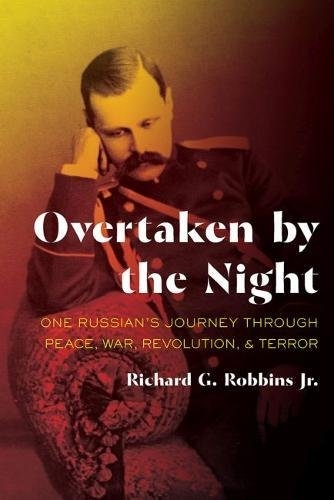
Richard G. Robbins Jr.
University of Pittsburgh Press
Hardcover $39.95 (544pp)
978-0-8229-4516-1
Buy: Amazon
Richard Robbins’s Overtaken by the Night is an extremely detailed account of Vladimir Dzhunkovsky’s life. His story spans not just one, but several of the most tumultuous periods in modern Russian history, and Robbins nicely positions Dzhunkovsky’s life as a way to tell the story of the Soviet revolution from its inception to its bloody aftermath.
With the overthrow of the tsar hitting its centennial, the book is well timed, as Dzhunkovsky grew up and first came to prominence under the Romanovs. As a youth, he was at the Winter Palace when Alexander III arrived to take the place of his assassinated father. He grew close to members of the royal family, serving them in the imperial military and in administrative roles before becoming the governor of Moscow province.
As head of internal security for the tsar in 1915, he had the notorious Rasputin watched and wrote a key report against him, leading to his own dismissal from office. Despite this support for the monarchy and his own religious beliefs, he still at times earned the trust of post-revolution leaders. At other times, he was imprisoned, and was eventually executed in one of Joseph Stalin’s mass killings in 1938.
Through all these phases, Dzhunkovsky witnessed and experienced some of Russia’s most important history: World War I, the fall of the monarchy, the communist revolution, and Stalin’s purges leading up to World War II.
Along with Dzhunkovsky’s public life, Robbins uses his memoirs and other historical sources to describe his personal life, from his early love for a married woman to his private thoughts on key intelligence operations. Overtaken by the Night is a long and thorough tome, a well-researched biography of a consistently influential Russian leader.
JEFF FLEISCHER (October 27, 2017)
The Greatest Comeback
From Genocide to Football Glory—The Story of Bela Guttmann
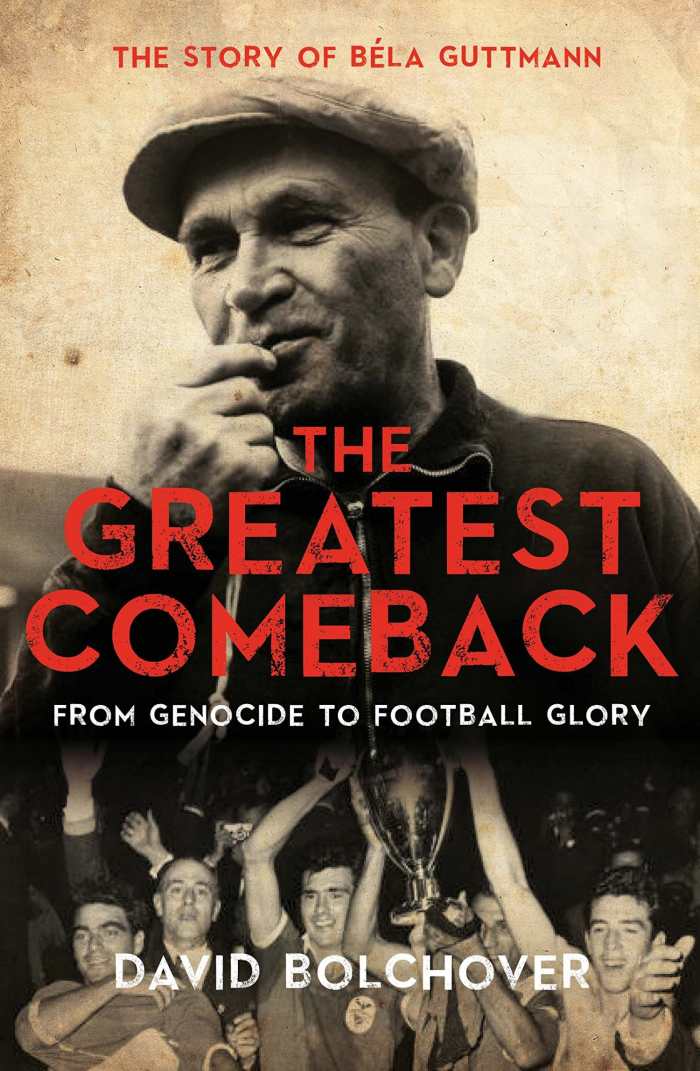
David Bolchover
Biteback Publishing
Hardcover $29.95 (320pp)
978-1-78590-139-3
Buy: Local Bookstore (Bookshop), Amazon
Before becoming arguably the most influential soccer coach in history, Bela Guttmann had to face far more important challenges: evading capture during the Holocaust, losing most of his family to the Nazis, and escaping a labor camp shortly before his fellow prisoners were sent to their deaths. The Greatest Comeback, David Bolchover’s exceptional biography of Guttmann, tells the parts of this story that Guttmann rarely addressed, using thorough research and a winning voice to produce the most comprehensive record of his life.
Bolchover does an excellent job of establishing Guttmann as a dominant and groundbreaking soccer force in the years before the war. He starred on Jewish teams in Hungary and Austria that regularly faced anti-Semitic crowds and needed extra security, even as newspapers acknowledged their prowess and players like Guttmann were chosen for national teams.
The fates of individual teammates, friends, and fans are peppered throughout the story, and Bolchover uses these anecdotes to underscore the all-consuming nature of the Holocaust. This also captures the luck involved in Guttmann’s survival, as his high profile made capture likely. His future wife hid him in an attic for months, and yet he still wound up in a slave-labor camp before a daring escape.
While the story of Guttmann’s survival during the Holocaust is consistently gripping, The Greatest Comeback manages the difficult trick of also making its subject’s postwar soccer achievements fascinating. The coach’s many career moves took him to places like Brazil, Portugal, and Uruguay, as well as back to the very Austrian and Hungarian regions where his friends and neighbors were killed.
While chronicling these moves, Bolchover not only writes expertly about football and the famed manager’s worldwide influence, but always shows how anti-Semitism and the legacy of the Holocaust continued to impact the world at those same points. The Greatest Comeback is a massive achievement as both a sports biography and a survivor’s tale, a harrowing and rewarding read.
JEFF FLEISCHER (October 25, 2017)
The Moor’s Last Stand
How Seven Centuries of Muslim Rule in Spain Came to an End
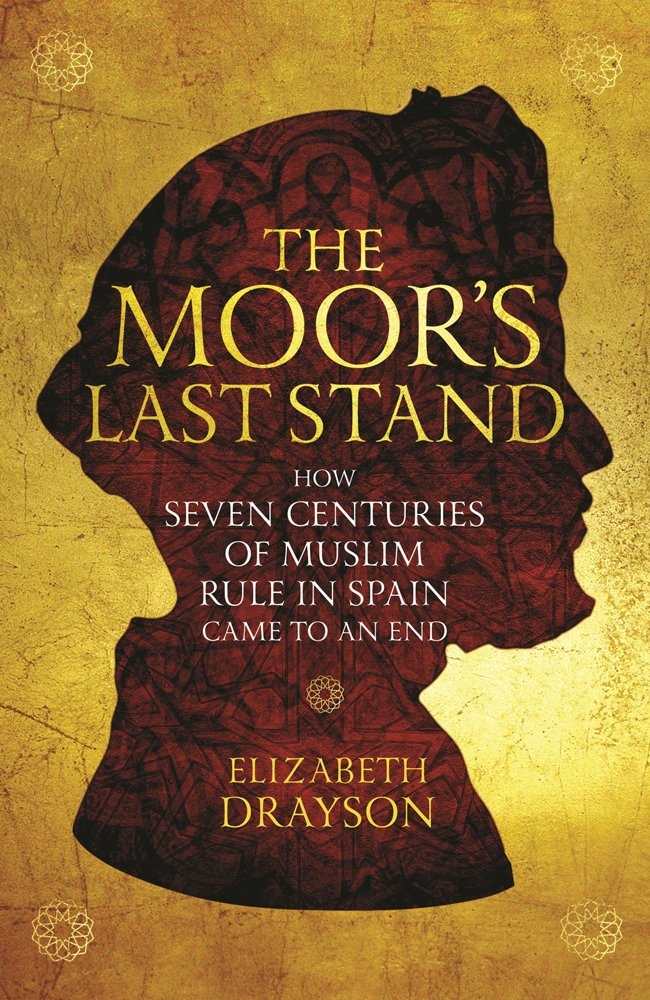
Elizabeth Drayson
Interlink Books
Softcover $20.00 (206pp)
978-1-56656-004-7
Buy: Local Bookstore (Bookshop), Amazon
One of the seminal events in both Spanish and Muslim history, the 1492 handover of Granada to Ferdinand and Isabella effectively ended seven hundred years of an Islamic kingdom in southern Spain. Less known is the story of the man who handed over the city, Boabdil (also known as Abu Abdallah Muhammad XI), and Elizabeth Drayson looks at the sultan’s life in her well-crafted work The Moor’s Last Stand.
Though Boabdil ruled the last Moorish stronghold for only ten years, it was a truly eventful decade. His family dynamics are heavy on intrigue and betrayal, as Boabdil had to face off with his father, then his uncle, in a series of power struggles. Taken prisoner by the Spanish in a failed attempt to gain territory, he reclaimed the Alhambra only by besting his family rivals—and only after promising to have Granada pay tribute to Ferdinand and Isabella.
At the same time, Catholic rulers were happy to let these fights play out, allying with one faction against another in a divide-and-conquer approach that Boabdil saw coming too late. His choice not to intervene in the Spanish conquest of Malaga—a condition he agreed to in exchange for his freedom—is shown to have isolated his own territory. And though he agreed to surrender Granada only after setting out elaborate terms, the Spanish crown carefully rewrote those terms to ensure the long-term loss of Muslim sovereignty in the south. Humbled and disgraced after turning over his city, Boabdil went into exile, and Drayson explores several possibilities for what happened to him after that point.
Throughout the short and well-paced book, Drayson uses writings from the time and historical takes on the era to explain and understand Boabdil’s ill-fated choices and the decline of Muslim rule. The sieges, conflicts, and intrigue are excitingly rendered, and The Moor’s Last Stand manages to make a relatively overlooked historical character into a three-dimensional figure.
JEFF FLEISCHER (October 27, 2017)
Jeff Fleischer

